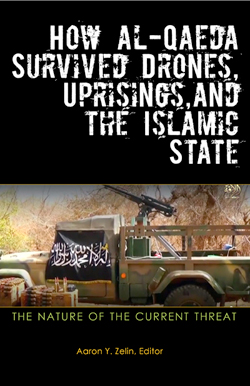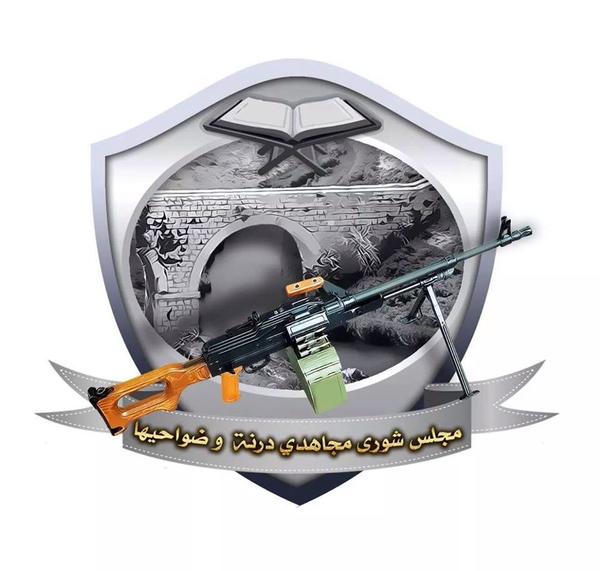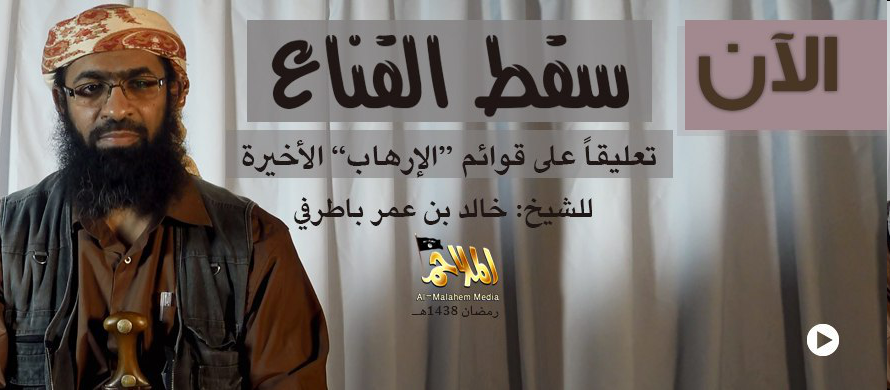
Weekly Eye on Jihadis in Libya Update – July 19, 2017




Over the past eight years, al-Qaeda’s fortunes have ebbed and flowed. Drones, uprisings, and a challenge from the Islamic State have forced the core al-Qaeda organization—historically based in the Afghanistan/Pakistan region—and its various branches to adapt and migrate outward.
In this new Policy Focus, Washington Institute fellow Aaron Y. Zelin compiles case studies demonstrating how each part of al-Qaeda’s network has evolved and survived the various challenges it has faced roughly since the Obama administration took office. Written by eminent scholars, practitioners, and government officials from the United States and abroad, the chapters are informed by a recent workshop in which the participants gave candid, off-the-record assessments of numerous key issues, including al-Qaeda’s current strategic outlook, a close examination of its branch in Syria, its branches outside of Syria (AQAP, AQIM, al-Shabab, and AQIS), and its current financial situation.
Contributors include: myself, Bruce Hoffman, Charles Lister, Daveed Gartenstein-Ross, Samuel Heller, Katherine Zimmerman, Andrew Lebovich, Christopher Anzalone, Don Rassler, Hans-Jakob Schindler, Katherine Bauer, and Matthew Levitt.
Click here to read the full publication (124 pages).
ISIS in Action
On 24 June, forces belonging to the GNA-aligned, Misrata-led al-Bunyan al-Marsus (BM) forces reportedly captured an ISIS fighter, while another fighter escaped, during a BM operation to retrieve hijacked fuel trucks in Wadi Bay, south of Sirte.
On 20 June, a lone-wolf attacker, allegedly either a Sudanese or Chadian national potentially tied to ISIS (though the group hasn’t taken any official credit for the attempt), detonated a suicide vest at the Sidra gate checkpoint held by Libyan National Army (LNA) fighters. He killed himself and injured another. Heavy artillery including 17 tank shells and an anti-air rocket were later discovered rigged to his vehicle, leading some to believe that the attacker’s initial target may have been the oil facilities rather than LNA fighters.
Last week, the Anas Dabbashi brigade – the formidable local militia guarding Mellitah complex historically aligned with Islamist-affiliated hardliner faction – as well as other local security and municipal sources in Sabratha, warned of the rising terrorist threat posed by Islamic State (IS) affiliates and other extremists in the region, thought to be located in areas south of Sabratha.
Other Jihadi Actors
On 23 June, the Benghazi Defense Brigade (BDB), an Islamist and Misratan aligned force which attacked the Oil Crescent ports in March, announced it will dissolve itself and that some members will enlist in the formation of a legitimate Libyan army. The group cited a desire to save Libya from further bloodshed and foreign involvement in Libya as justification for their disbanding. In actuality, the BDB disbanded itself so as to best cope with its wholesale defeat by Haftar’s forces in Jufra over the past weeks. The BDB was the only Libyan entity (as opposed to individuals) implicated by Gulf countries for terror links to Qatar as part of the regional diplomatic embargo against the country. According to high ranking members, the Libyan Muslim Brotherhood is also set to be dissolved.
Throughout last week the Libyan National Army (LNA) continued its pressurized advances in Benghazi, fully claiming control over the Souq al-Hout area and the main central square, leaving only Sabri under the control of the jihadists. The final battle between the LNA and the remaining jihadist fighters is being fought on a house-to-house basis within a 9km square zone of the Sabri area. The LNA announced that more than 3,800 mines and IEDs were defused in Sabri and Souq al-Hout areas throughout last week.
Local sources report ongoing preparations by both hardliners and pro-GNA militias in Tripoli for a new military offensive to retake control of the capital, taking advantage of the regional Qatar embargo and the national reshuffling of alliances on the other. The Grand Mufti, the spiritual figurehead for many of the hard-liner Islamist factions, has again called on revolutionaries to reassemble and save the ‘dying’ revolution. On 21 June, the control tower of Tripoli’s Mitiga Airport’s control tower was attacked by unspecified group overnight, causing a flight to be diverted to Misrata. Sources disagree on whether the attack was spurred by local militias or if its intent was to detain people arriving on these flights in Misrata. The same day, Munir Mohammed Abu Zeid, a hardliner loyalist affiliated with the General National Congress’ (GNC) former National Salvation Government and leader of the ‘Shield Rahba Camp’ in Tajoura, was assassinated in Tripoli’s Zawiyya Dahmani area.
—
A weekly update of ISIS’s actions, the Western response, and developments pertaining to Libya’s other militias is available by subscribing here. To read about Western countries’ responses to ISIS in Libya this week, click here, and to read about the developments within the anti-ISIS Coalition of Libyan militias, click here. To read all four sections of this week’s Eye on ISIS in Libya report, click here.


Click the following link for a safe PDF copy: Sarāyā al-Dafā’ ‘an Binghāzī — Greetings
____________
Source: Telegram
To inquire about a translation for this statement for a fee email: [email protected]

Click the following link for a safe PDF copy: Majlis Shūrā al-Mujāhidīn Darnah — A Blessed ‘Īd
____________
Source: Telegram

Video:
Statement:
Sarāyā al-Dafā’ ‘an Binghāzī — Statement #25
____________
Source: Telegram
To inquire about a translation for this video message and statement for a fee email: [email protected]

Arabic:
Sarāyā al-Dafā’ ‘an Binghāzī — Message to the Secretary-General of the United Nations Regarding Egyptian-Emirati Interference in Libyan Affairs
English:
Sarāyā al-Dafā’ ‘an Binghāzī- Message to the Secretary-General of the United Nations Regarding Egyptian-Emirati Interference in Libyan Affairs (En)
_____________
Source: Telegram

____________
To inquire about a translation for this video message for a fee email: [email protected]
